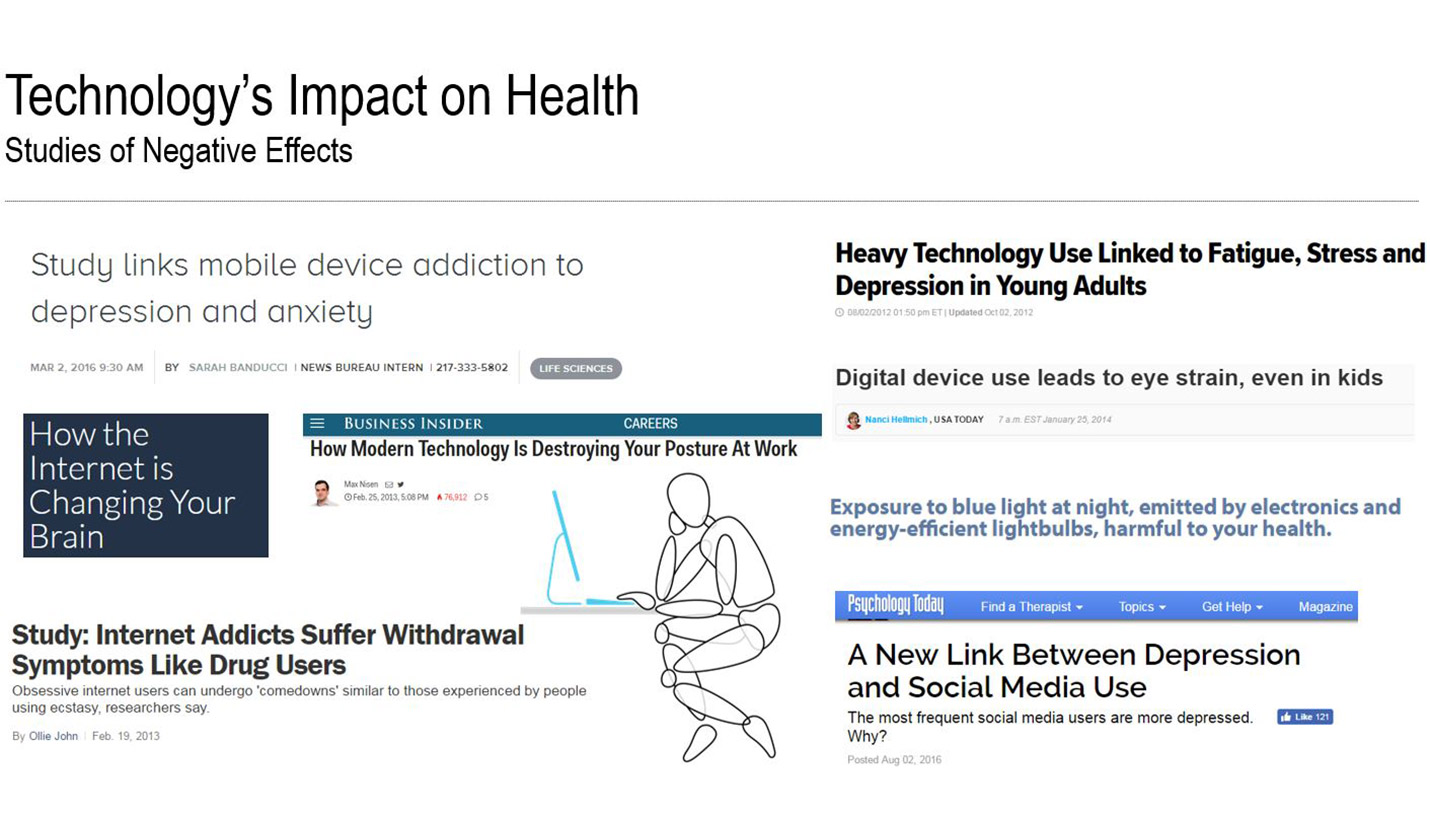Campus Constants, Digital Flux
Page Urban Designer Katharyn Hurd, LEED AP BD+C, and Page Landscape Architecture Director Andrew Sullivan, ASLA, recently co-published an article in The Field, which is authored by members of the ASLA (American Society of Landscape Architects) Professional Practice Networks. They wrote about a now-ubiquitous element that the planners of early, iconic American campuses like Princeton University, Wake Forest or Emory University never had to consider - technology. Both studied at University of Illinois campuses which were founded in the late 1800s, and Katharyn also received her masters at the iconic Harvard University. Typically, they work on innovative and cutting-edge ideas about the 21st century university and their article addresses the challenge of adapting the design of yesterday's campuses to today's social expectations.
Technology has without a doubt transformed many of the methods and practices planners and designers use when approaching any project. This is particularly true on college campuses, as the field of education embraces technology to better serve and engage with students. However, there are some negative impacts from immersion in technology. The campus landscape provides an increasingly essential antidote to today’s tech-overload with its ability to facilitate social connection and provide restoration.

Technology in Campus Planning and Design
In addition to functioning as repositories for history and tradition, campuses are typically places that value innovation and creativity. Thus, technology is often embraced and incorporated into campuses more quickly than many environments. Experimentation, learning, and engagement drive the integration of technology into the built environment to test how it might best serve the campus community.
We are also increasingly seeing studies that indicate that excessive technology device use can have detrimental physical and mental health effects such as fatigue, stress, depression, insomnia, chronic pain, and others, which have been extensively covered by news outlets such as Academic Earth, Time, Business Insider, The Huffington Post, USA Today and and Psychology Today to name a few examples.
Other studies have also suggested that spending time engaging with the natural environment provides an array of benefits that may counteract the negative impacts of technology use, including improved physical fitness, vision, concentration, critical thinking, creativity, academic performance, mood, immunity, and social behavior.
Campuses have traditionally leveraged the landscape to serve four important functions: ceremony, restoration, social interaction, and play. While the particular manifestations of campus landscapes vary by context, these four landscape functions are present on any successful campus and are now more critical than ever.
Ceremony
Iconic lawns, main quads, and central plazas are common elements of campuses that anchor a coherent structure and organization through a grand landscape gesture. These ceremonial spaces provide orientation points and serve as the hearts of campuses. They are democratic spaces for hosting events such as graduations, student demonstrations, and celebrations. Iconic lawns like the one at University of Virginia organize key campus buildings and become important central locations on campus to orient visitors as well as form the basis of future campus development.

Today, these ceremonial spaces perform a series of new roles as well. The South Lawn project at UVA is a useful example that illustrates how technology has allowed us to create high-performing landscapes that are multi-functional. It extends the main lawn and campus over a major road to bring pedestrians safely across a now-seamless landscape. It also provides seating and gathering areas of multiple sizes to support social functions. Stormwater is gathered in an artful channel and meanders through the site, highlighting the movement of water through the landscape. These additional uses augment the traditional ceremonial purposes of the lawn to enrich the campus experience and increase spatial efficiency.
Restoration
Landscapes for respite, quiet study, and engagement with ecology provide privacy and serenity in the midst of the hustle and bustle of campus life. These intimate spaces can be part of larger natural areas like arboretums, forests, and water bodies or smaller-scale gardens carved out of larger campus spaces.
Traditionally these were often single-purpose spaces designated as decorative or natural “wild” ecologies. Today, they can serve many functions such as green infrastructure and teaching opportunities as well as offering serene beauty to those who visit them.
Social Interaction
Communal landscapes are one of the hallmarks of campus life. These spaces can be a variety of sizes and types, but they serve the same general function: fortifying a campus community. Faculty, staff, students, and often the public are all welcome and feel ownership of these spaces. This encourages interaction between affiliations, disciplines, ages, and backgrounds, which in turn promotes inclusivity and the exchange of diverse ideas.

When working with the Berkeley Global Campus in Richmond Bay, the vision was to create a state-of-the-art research campus. Given the extremely high-tech environment, the client acknowledged the value of gathering spaces to further their own research goals of interdisciplinary shared knowledge. By creating an active campus spine, the circulation and common spaces are shared, allowing countless opportunities for researchers to run into one another at the café, walking to their labs, or just taking a mid-day break outside. These experiences build a sense of community while also enriching each others’ work.

Play
Whether it’s shooting hoops, tossing a Frisbee, or playing kickball, campuses have long provided spaces for recreation and play. Blowing off steam from stressful courses and building community through teamwork are crucial functions on campuses that lead to healthier, happier, and more productive students.
Intercollegiate athletics complexes, recreation centers, play fields/courts, and multi-use lawn areas provide a breadth of options for campus play. Depending on the size and type of institution, the specific facilities vary, but they all serve the purpose of activating members of the campus community, either physically or as fans.
The Future of Technology and Campus
Since moving to the Bay Area in early 2016, I’ve noticed an interesting trend in corporate campus design for technology companies. Their focus in attracting and retaining talent as well as optimizing their employees’ productivity have led them to physically and operationally model their corporate campuses on the academic campus, with the same four landscape functions of ceremony, restoration, social interaction, and play.
These tech companies are leading the future of technological innovation and its increasing integration into all aspects of our lives. In order to compete in the competitive tech market, these companies work very hard to recruit, retain, and support their employees. To do this, they invest a great deal in their physical environments, and particularly their landscapes, reinforcing the notion that the landscape is integral to the definition and success of a campus.
Engagement with outdoor campus environments is valued for many reasons, one of which is that they are places to cope with the stresses of our modern lives and the technologies that dominate them. We can rest assured that while our landscapes will continue to evolve with technology, the core functionality will remain the same. The data supports what we’ve always intuitively known: that the landscape serves a crucial role in preserving our wellbeing and success, which is why it’s central to how we plan and design campuses.
To view Katharyn and Andrew's article on The Field, click here.
Contributed By
Katharyn Hurd, LEED AP BD+C
02/28/2017
People
Related Posts
- Honor Award Presented to TFC Commissioners
- Thinking Forward to 2015
- Protecting San Francisco’s Trees
- Honor Award from ASLA: Texas Capitol Complex Master Plan
- Design That Makes A Difference: The Blackshear Schoolyard Project
- Connecting the Community at Blackshear
- The Importance Of How – The Blackshear Schoolyard Project











